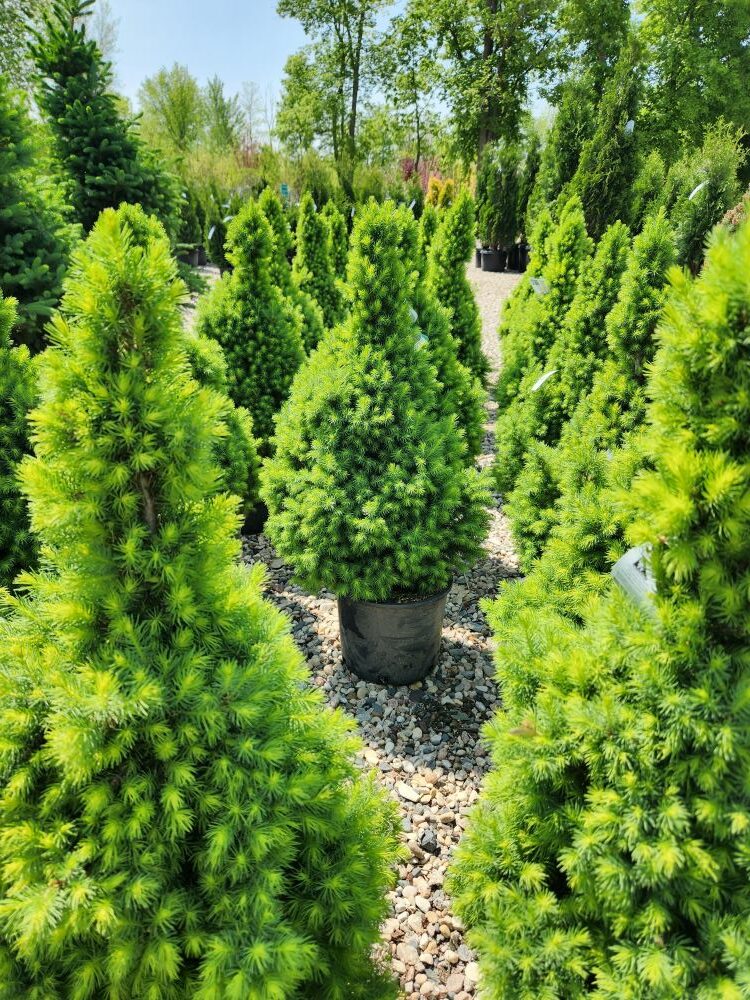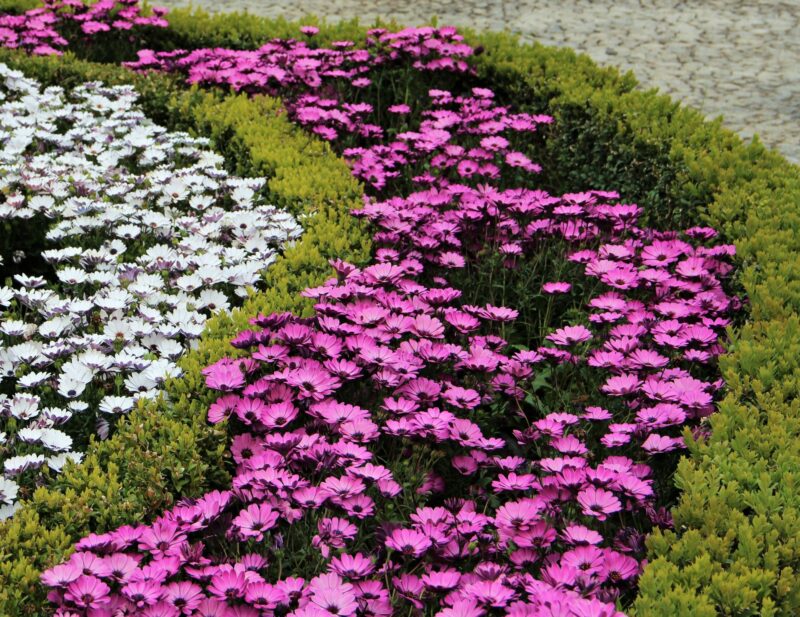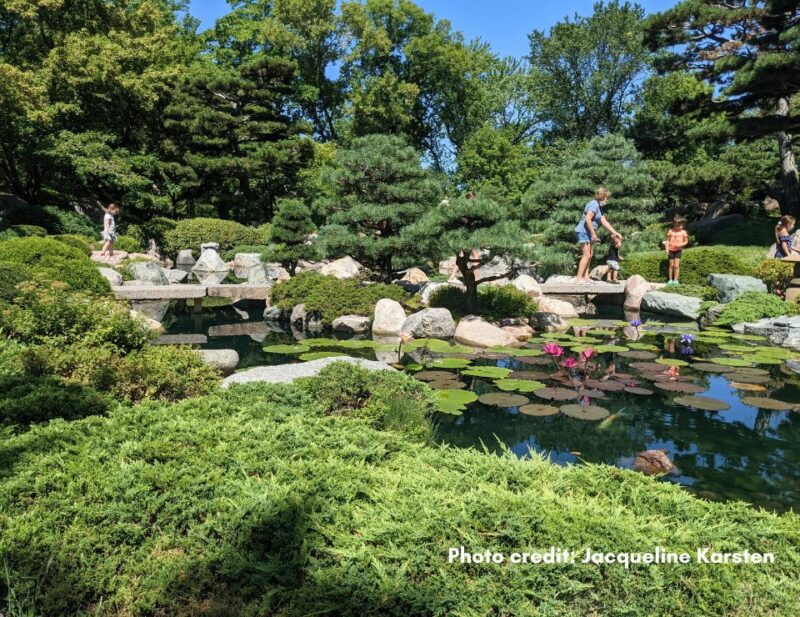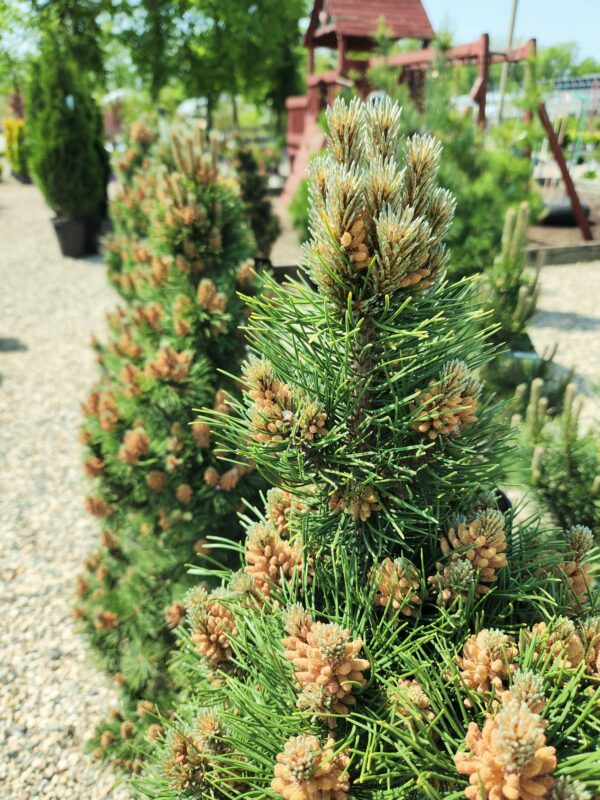
Landscape Design Using Evergreens
In this Elements of Landscape Design Series post we are focusing on landscape design using evergreens as a sustainable plant that is one of the most versatile plant groups.
Partnering evergreens with shrubs and perennials
Evergreens create structure, pretty living privacy screens, backdrops, form, texture and rhythm. A single evergreen can be a focal point or a complimentary backdrop to other plants, garden decorations and resting areas.
Architectural simplicity, which is very popular right now, can be easily created with a row of evergreens with the pop of colors of blooming shrubs in front. Add another layer in front of those shrubs with a repetition of one or two perennials and you can have a three-layer balanced look. Have even more fun with the spaces in-between the perennials with annuals so you can have flexibility with color schemes year-after-year. A gradual transition in heights creates a pleasing effect compared to an abrupt tall and then short plant in front. Of course, if you like contrast that may be exactly what you are going for.
Evergreens can make an intentional space for any combination of plants. The use of an evergreen that can easily be shaped, like boxwood, can create borders and frames that create rhythm and support other plants. Plant herbs, perennials, flowering annuals, grasses, and bulbs to create moving swaths of color among resilient and structured evergreens.
A sculptural use of an evergreen is to use one as accent plant and focal point to create a special moment where your eyes stop and rest.
With all their different uses and bold structure, no wonder they’re commonly called the backbone of a landscape.


First image : Use evergreens as accent plants in a naturalist garden. Photo credit: Canva
Second image: Use repetition of an evergreen as a frame to other plants. Photo credit: Canva
Impact of evergreens on their own
Evergreens will also create a changing and diverse looking landscape on their own.
The lovely lime green new spruce growth ( Image 1 ) and tan colored pine cones ( Image 3) show how an evergreen can change color and texture during its lifetime and season so read the tags and look at pictures to be aware of how your evergreen may look throughout the seasons.
Foliage of particular evergreens can change color during the winter months and will create pretty privacy fences all year. Layering tall, medium, and spreading ground cover evergreens with different textures and color can also create a big impact with a verdant color palette. ( Image 2 ).
Add flowing tall grasses and deciduous trees to create softer and billowing texture behind or intermixed with evergreens.


What to consider when choosing evergreens
1. Color and textures of needles, leaves, nuts and cones. This includes becoming familiar with how they shed heavy loads of old foliage. Pine, arborvitae, spruce, and cypress can have brief periods of brown foliage on the inner mature foliage before they drop. This is a natural process and it allows them to grow new green growth the next year.

2. Sunlight requirements. Full sun: 6+ hours. Part sun: 4-6 hours. Shade: Less than 4 hours.
3. Size and shape at maturity. Ex: Large pyramid-shaped pine varieties can lose their bottom branches when they get large and create a space underneath.
4. The soil type you are planting in. Ex: clay, sandy, loamy, holds water, well-draining, etc.
5. Location you want to plant. Ex: open south side or north areas that get a lot of cold north wind will be harsher winter conditions so hardier evergreens may be needed.
6. Purpose of the evergreen. Ex: pretty living fence, wind block, shade, backdrop for other plants, home for wildlife, accent plant, hedge, or add texture and color for the winter. Evergreens have so many uses!
Think about creating a balanced landscape when shopping for new plants and when walking around your gardens. When you’re looking at plants that you are drawn to, like the blooming hydrangea, dark bronze-leaf ninebark, towering coneflowers, or the low-lying annual which blooms all season; think about how an evergreen will be the strength those plants need to highlight their stunning colors and textures.
